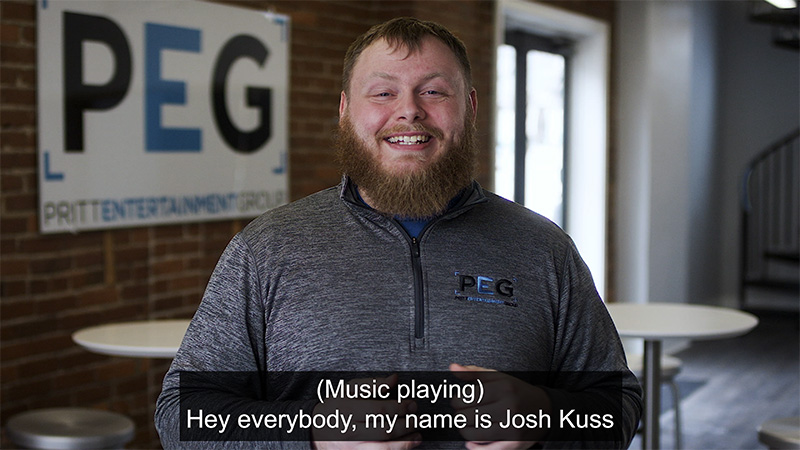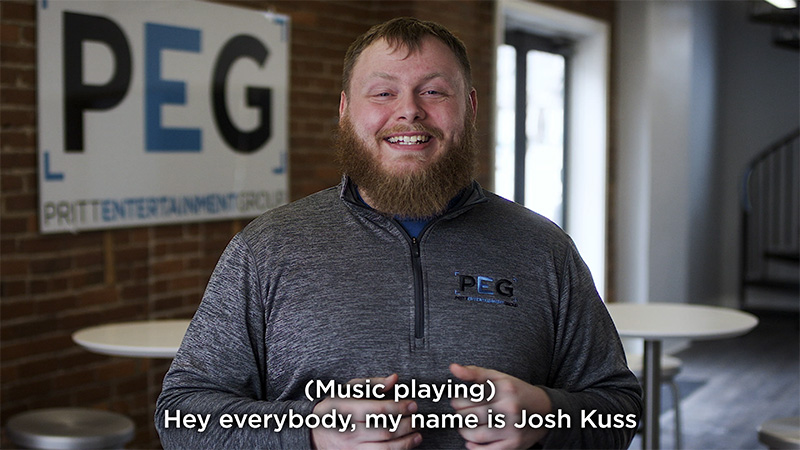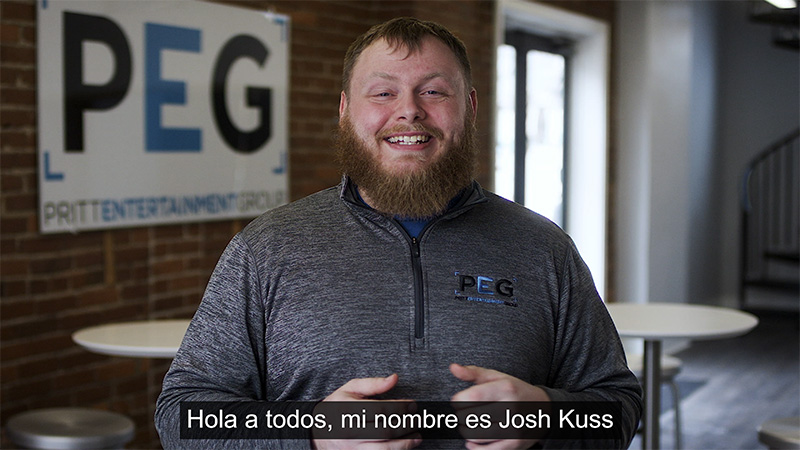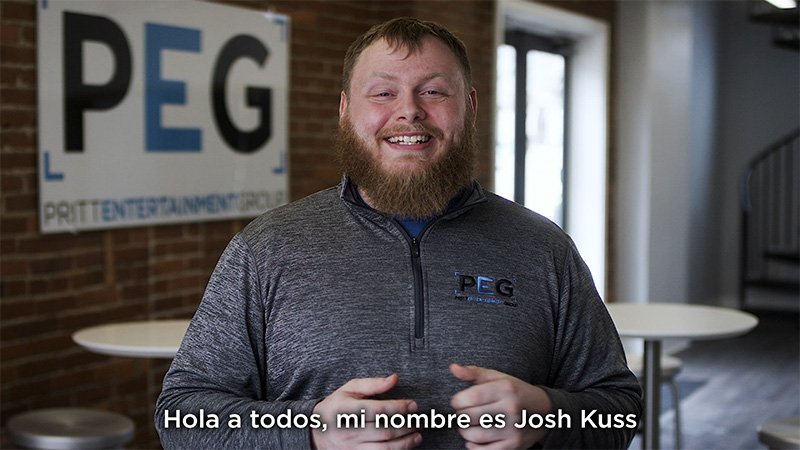Captions Vs. Subtitles: What's The Difference?
Do you call them captions? Subtitles? Maybe you just call them ‘words at the bottom of the screen?’ Even though all of these terms may seem interchangeable, each of them are referring to a different concept.
Except for ‘words at the bottom of the screen’ - that one’s pretty all-encompassing.
Captions
Captions are the most common type of text that you’ll see overlaid on a video. You’ll find them as an option for your favorite series on Netflix, on numerous tv’s at your local sports bar and on that video that caught your eye while you were scrolling through Facebook.
Captions were originally designed for those that are deaf or hard of hearing, and for that reason will describe every sound in a video, including music, sound effects and anything else that is audible.
There are two different categories for captions, closed and open.
Closed captions (often displayed as “CC” on a remote control or video player interface) are the more common and stereotypical style for captions. They have the ability to be turned off and on, hence the name “closed,” as they are hidden by default until they are “opened” by the viewer.
Conversely, open captions are captions that are viewable by default and cannot be hidden (or closed). In other words, open captions are burnt into the video itself, and thereby can be fully customized with any fonts, colors, sizes and many other visual parameters. Closed captions on the other hand are integrated via closed captioning systems during broadcasts or video playback. For this reason they’re way less customizable and are often seen as simple white text with black text boxes, allowing them to stay legible no matter the visual content underneath.
 Closed Captions
Closed Captions  Open Captions
Open Captions
If you’ve ever watched Jeopardy! or Wheel of Fortune you might be familiar with the phrase “closed captioning brought to you in-part by…”. What this means is that an advertiser has paid for the closed captions to be created and integrated into the broadcast of this program. Though every program won’t have a sponsor that provides the creation and implementation of their closed captions, the Americans with Disability Act (ADA) requires that all public multimedia must be captioned in order to prevent discrimination against those who are deaf or hard of hearing.
It might be hard to imagine a time where captions weren’t an option for nearly everything, but that was the case in the early 1970’s. That’s when open captions were first used by a Boston public television station for broadcasts of “The French Chef” with Julia Child, and certain rebroadcasts of ABC News to make it more accessible to those with hearing impairments. Surprisingly, the first instances of closed-captioning on major networks like NBC, ABC and PBS weren’t until 1980.
Subtitles
Subtitles, though similar to captions in a dialogue sense, are meant for viewers that can hear, but can’t understand the language in the video. Therefore, subtitles will only really deal with dialogue or spoken language, and will ignore music cues, sound effects and other sounds.
Subtitles, like captions, can also be open or closed. Foreign subtitles are normally closed, allowing the viewer to choose from one or more language options that they can see translations for the dialogue that’s being spoken. For this reason, subtitles can be a great way to watch something and make it easier to understand in your native language, or they could be used as a helpful learning tool for those that are trying to immerse themselves into a new language.
 Closed Subtitles
Closed Subtitles  Open Subtitles
Open Subtitles
Subtitles can also be used in a non-optional, burnt-in ‘open’ sense if there’s a section of the video that features someone speaking another language, or if there’s muffled audio quality or otherwise difficult to understand dialogue. This can often be seen in documentaries or reality series where unscripted dialogue is being recorded constantly and in the event of dialogue becoming harder to hear, you can’t really get another take to capture the audio clearer. Thus, you’re stuck with potentially difficult to understand audio, but you can use subtitles to bridge that gap and bring understanding to the viewer.
What the Future Holds
Captions are seen as highly necessary in order to make movies and television enjoyable by the masses, but they’re also vital for social media content. Nearly everyone is scrolling through pages and pages of content online everyday. Either through privacy or common courtesy, it’s common for these content consumers to keep their volume low or off completely while scrolling in a public place.
But with no audio, how will the viewer understand the message that a video is trying to convey? One solution is to use captions, that way even when playback is muted it’s still easy to understand. Many online platforms have adapted to this by implementing automatically generated captions for uploaded videos. These captions are usually created by AI programs that will try to guess precisely what is being heard and will try to automatically match it with viewable text.
YouTube and Facebook are some of the common platforms where any given video will have an option to use these automatically generated captions. The same automated process can also be applied to foreign subtitles that are translated from these auto-generated captions. Although this technology exists and it’s evolving to become more accurate every year, it’s still rare that it works flawlessly. You can often tell the difference between automatically generated captions and manually transcribed captions based on how a program will at times confuse words that sound alike but mean two different things (also called homophones).
This is why the safest bet for accurate captions is to manually create and insert them, or at least double checking these auto-generated captions to make sure that everything looks and reads as good as it sounds.
Captions and subtitles are one of the often overlooked, yet crucial elements to a finished piece - and depending on your audience they might be more vital than you think. Although both are very similar, it’s important to recognize the advantages and disadvantages of each so that you can know which is the better option for any given situation.




